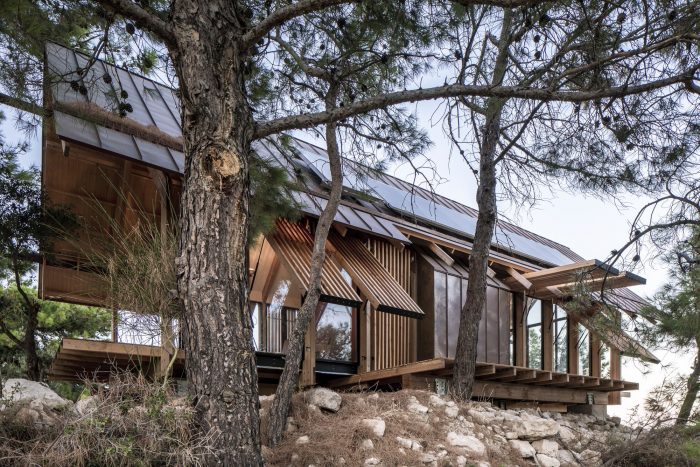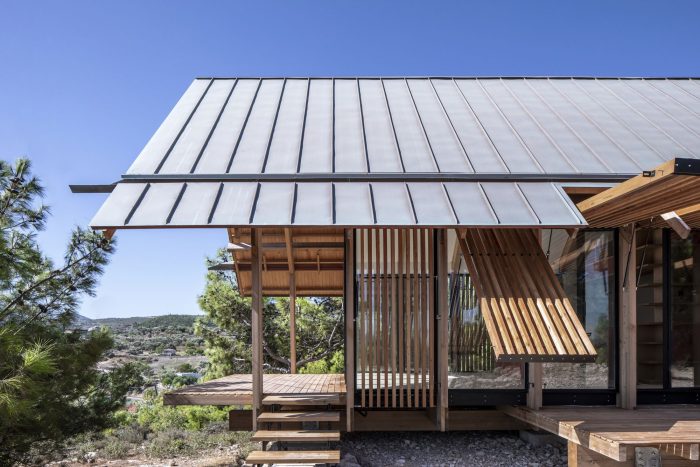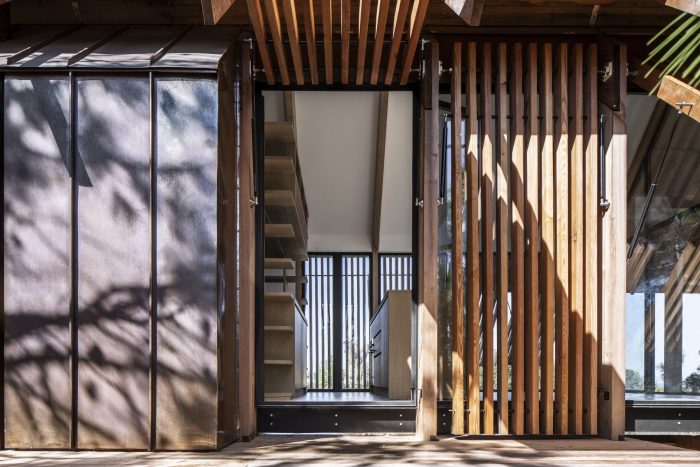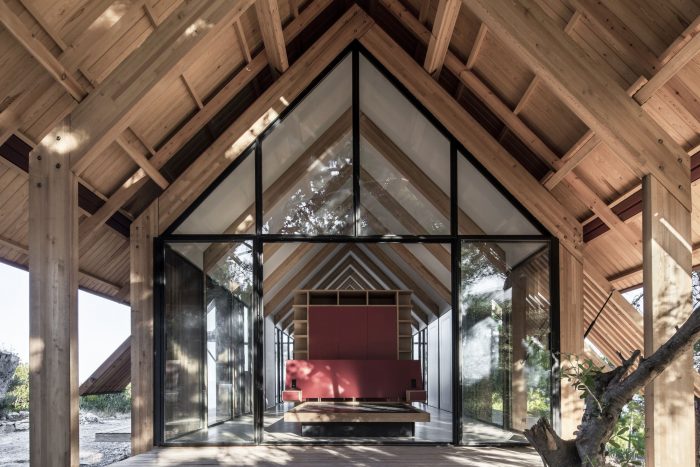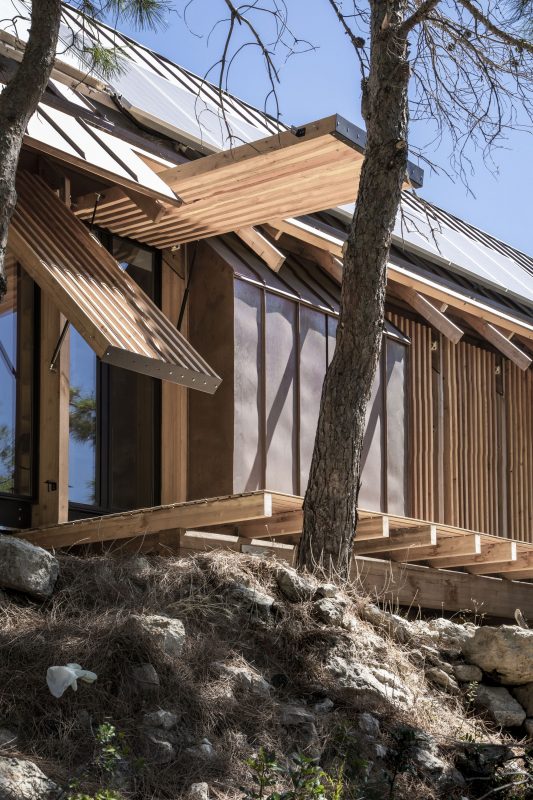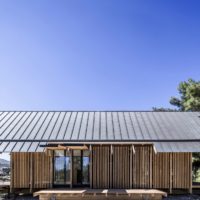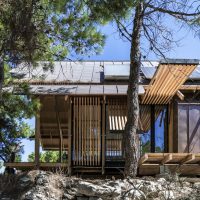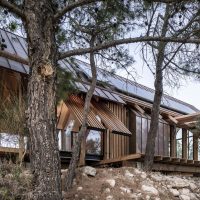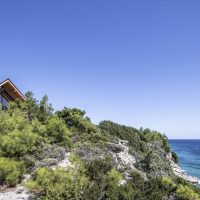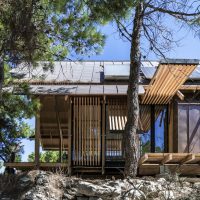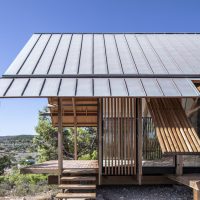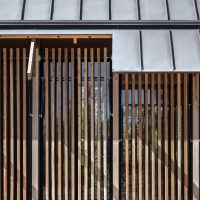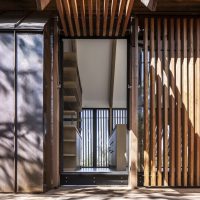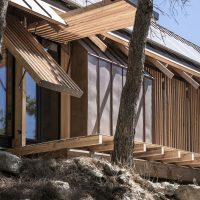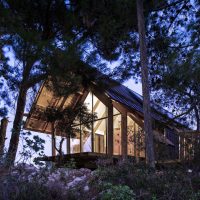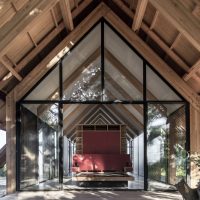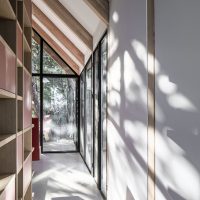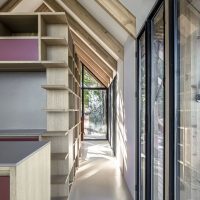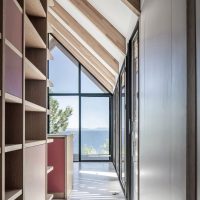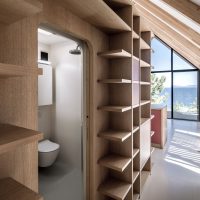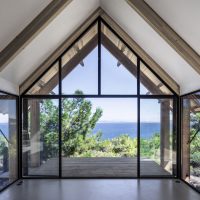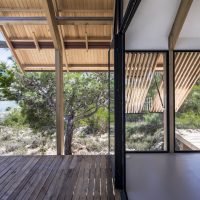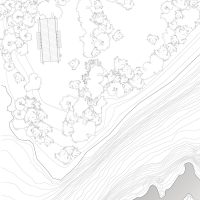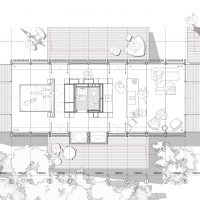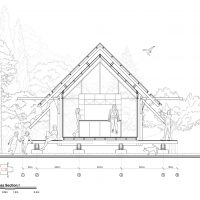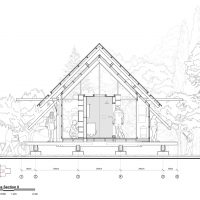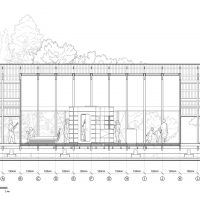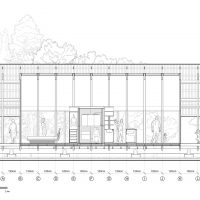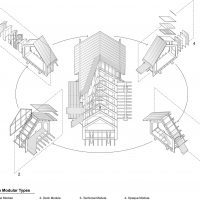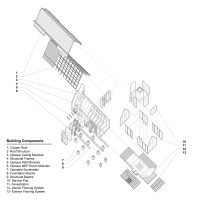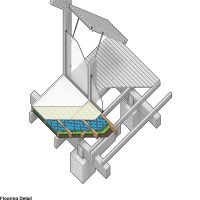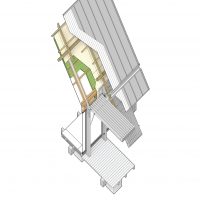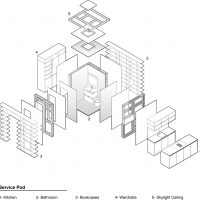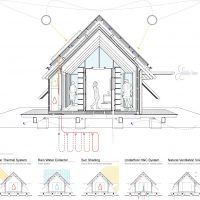Concept Of MU50 House:
Designed by Teke Architects Office, (MU50 House) The Modular Unit is a small-scale, modular, off-grid structure, designed to be recyclable and adaptable to a wide variety of sites. Through its simplicity, flexibility, and choice of materials, this structure is intended to bring beauty to the users’ daily lives; to allow them to incorporate it into their quotidian landscape, and to connect with the surrounding nature reducing at most its carbon footprint. A single module consists of two untreated Larch timber frames and the enclosure between them.
The structural frames and the enclosure define the shell of the project, while its interior core consists of a separately constructed service pod with amenities and storage space. The pod includes the bathroom and kitchen as well as the necessary storage space. Glazing on all sides of the building allows visual transparency and creates a sense of openness and continuity between the interior and the surrounding landscape.
The exterior decks, protected at different times of the day by manually operated timber shades, offer a variety of micro-climatic outdoor experiences generated by the sun and wind conditions that change as one moves around the unit.
Structure of MU50 House:
The structural Larch-wood frames and the enclosure panels were prefabricated and then easily mounted on-site reducing the installation time. Details of the steep gable-roof cover were developed for three possible building materials – wood, aluminum, and copper; the latest material was used to cover MU50.
This is a multi-layered passive climatic control surface: while the thermal insulation and waterproofed panel finish above the laminated wood roof structure provide the function of a conventional system; copper surface mounted above the actual roof surface provides efficient passive control and reduction of heat gain, by creating continuous air movement and shading above the unit.
This roof also houses photovoltaic and solar panels, making them an integrated component of the design language. The unit incorporates technologies that reduce its environmental impact.
A simple, open plan allows natural lighting and facilitates cross ventilation. The transparent surfaces designed to receive maximum daylight into the interior spaces minimize the necessity for artificial lighting. The high-pitched gable roof houses the photovoltaic panels to produce electricity and solar panels to heat water.
Ground source heat pumps and underfloor heating constitute an efficient system that makes use of minimal energy. The floor of the unit is raised above the ground, which allows air circulation below its surface. Building orientation, custom-made double-pane glazing, and piston-operated pine sunshades all protect the interior from direct sunlight.
The modular system used to build MU50 House was designed to allow a wide range of building uses, reduce environmental impact and maximize site flexibility.
MU50 House’s Elements:
The elements of this modular system can be varied in number and materials to house different building functions. As more structural frames are added, the building becomes larger; it can remain a singular, simple, rectangular space, or it can be subdivided by one or more service pods. Thus, a simple act of repeating and combining a small number of relatively simple building elements can produce a wide variety of spaces fit for different uses – from a small meditation room to a dwelling.
As a basic principle, regardless of MU50 House use or choice of the site, the modular system elements are designed to be constructed in reusable and recyclable materials that are easily available and can be assembled by local builders on any specific site.
This fundamental design choice ensures a reduced environmental impact for any specific building size or use. Simple spatial configurations that result from the repetition of the basic elements facilitate natural lighting and ventilation. Water-collecting and energy-producing systems can be added to the basic units to make them completely off-grid.
Project Info:
Architects: Teke Architects Office
Location: TURKEY
Area: 50 m²
Project Year: 2019
Photographs: Altkat Architectural Photography
Manufacturers: AutoDesk, Kale, McNeel, NasWood, SISECAM
Project name: MU50 House
- Photography by © Altkat Architectural Photography
- Photography by © Altkat Architectural Photography
- Photography by © Altkat Architectural Photography
- Photography by © Altkat Architectural Photography
- Photography by © Altkat Architectural Photography
- Photography by © Altkat Architectural Photography
- Photography by © Altkat Architectural Photography
- Photography by © Altkat Architectural Photography
- Photography by © Altkat Architectural Photography
- Photography by © Altkat Architectural Photography
- Photography by © Altkat Architectural Photography
- Photography by © Altkat Architectural Photography
- Photography by © Altkat Architectural Photography
- Photography by © Altkat Architectural Photography
- Photography by © Altkat Architectural Photography
- Photography by © Altkat Architectural Photography
- Photography by © Altkat Architectural Photography
- Site plan
- Plan
- Cross section
- Cross section II
- Long section
- Long section
- Main modular types
- Axo
- Flooring detail
- Axo
- Service pod
- Diagrams


